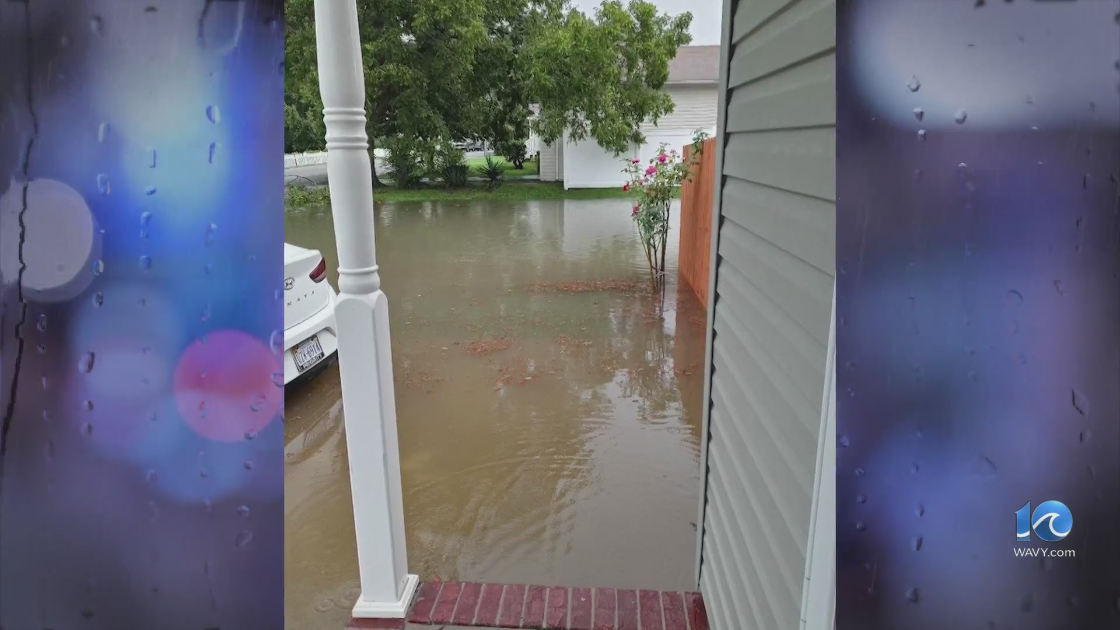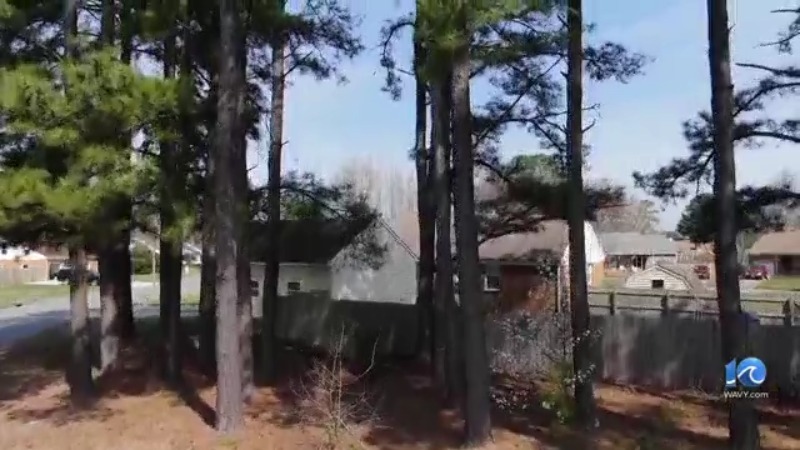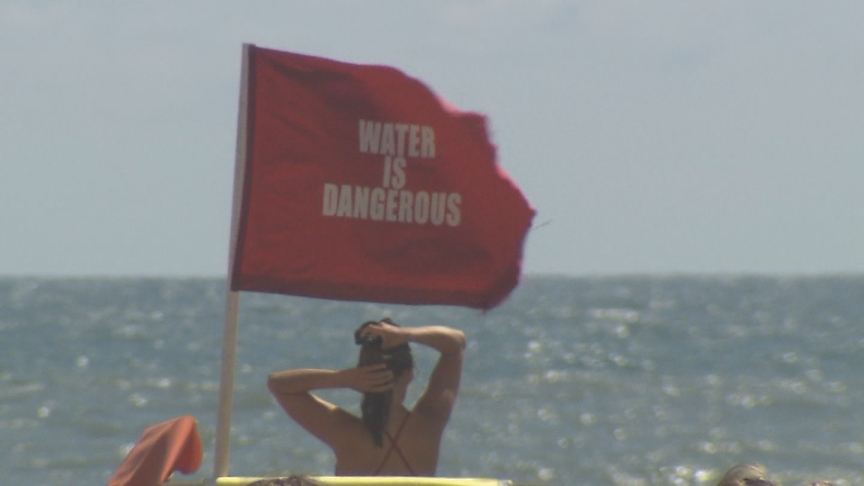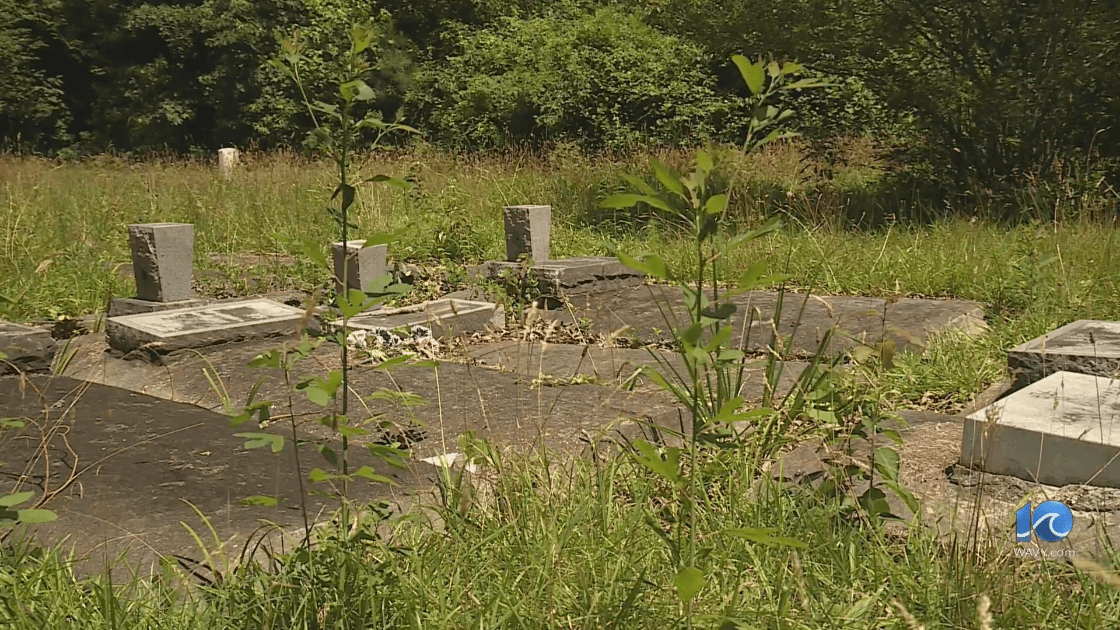NORFOLK, Va. (AP) — A slow-motion catastrophe has been playing out in the coastal North Carolina village of Rodanthe, where 10 houses have fallen into the Atlantic since 2020. Three have been lost since Friday.
The most recent collapse was Tuesday afternoon, when the wooden pilings of a home nicknamed “Front Row Seats” buckled in the surf. The structure bumped against another house before it bobbed in the waves, prompting now familiar warnings about splintered wood and nail-riddled debris.
The destruction was decades in the making as beach erosion and climate change slowly edged the Atlantic closer to homes in the somewhat out-of-the way vacation spot. The threat is more insidious than a hurricane, while the possible solutions won’t be easy or cheap, either in Rodanthe or other parts of the U.S.
Barrier islands aren’t ideal for building
Rodanthe is a village of about 200 people on the Outer Banks, a strip of narrow barrier islands that protrude into the Atlantic like a flexed arm.
Barrier islands were never an ideal place for development, according to experts. They typically form as waves deposit sediment off the mainland. And they move based on weather patterns and other ocean forces. Some even disappear.
David Hallac, superintendent of the Cape Hatteras National Seashore, along which Rodanthe is located, said it was more common in previous decades for homeowners to move their houses from the encroaching surf.
“Perhaps it was more well understood in the past that the barrier island was dynamic, that it was moving,” Hallac said. “And if you built something on the beachfront it may not be there forever or it may need to be moved.”
The beach is rapidly eroding
Rodanthe is one of many communities on Hatteras Island, which is roughly 50 miles (80 kilometers) long and has been experiencing beach erosion for decades.
The Cape Hatteras Lighthouse was 1,500 feet (457 meters) from the ocean when it was built in 1870, Hallac said. By 1919, the Atlantic was 300 feet away. The lighthouse was later moved to a more protected location.
The erosion has been measured to be as much as 10 to 15 feet (3 to 4.5 meters) a year or more in some places.
“And so every year, 10 to 15 feet of that white sandy beach is gone,” Hallac said. “And then the dunes and then the back-dune area. And then all of a sudden, the foreshore, that area between low water and high water, is right up next to somebody’s backyard. And then the erosion continues.”
‘Like a toothpick into wet sand’
Ocean waves eventually lap at the wooden pilings that hold up the beach houses. The supports could be 15 feet deep. But the surf slowly takes away the sand that is packed around them.
“It’s like a toothpick in wet sand or even a beach umbrella,” Hallac said. “The deeper you put it, the more likely it is to stand up straight and resist leaning over. But if you only put it down a few inches, it doesn’t take much wind for that umbrella to start leaning. And it starts to tip over.”
A single home collapse can shed debris up to fifteen miles along the coast, according to an August report from a group of federal, state and local officials who are studying threatened oceanfront structures in North Carolina. Collapses can injure beachgoers and lead to potential contamination from septic tanks, among other environmental concerns.
Collapsed houses were likely in compliance
Rules that govern coastal development in North Carolina have been in place since the 1970s, before many of the collapsed houses were constructed and when there was a lot more beach, said Noah Gillam, Dare County’s planning director.
“At the time they were built, they were likely in compliance with all of the set-back requirements,” Gillam said. “And they were set back, in many situations, hundreds of yards from the dune line, let alone the ocean.”
Since then, the rate of erosion has sped up, swallowing swaths of sand. Storms also have become more frequent and more intense, pounding the shoreline of a community that is acutely exposed to the ocean.
‘This is a national issue’
Meanwhile, officials and experts have been focused on solutions or at least ways to address the problem. The report on threatened oceanfront homes noted that 750 of nearly 8,800 oceanfront structures in North Carolina are considered at risk from erosion.
Among the possible solutions is hauling dredged sand to eroding beaches, something that is already being done in other communities on the Outer Banks and East Coast. But it could cost $40 million or more in Rodanthe, posing a major financial challenge for its small tax base, said Gillam, of Dare County.
Other ideas include buying out threatened properties, moving or demolishing them. But those options are also very expensive. And funding is limited.
U.S. Rep. Greg Murphy, a North Carolina Republican, recently introduced a bill in Congress that would make some money available. For example, the legislation would authorize federal flood insurance dollars to help demolish or relocate erosion-plagued homes before they collapse.
Braxton Davis, executive director of the North Carolina Coastal Federation, a nonprofit, said the problem isn’t limited to Rodanthe or even to North Carolina. He pointed to erosion issues along California’s coast, the Great Lakes and some of the nation’s rivers.
“This is a national issue,” Davis said, adding that sea levels are rising and “the situation is only going to become worse.”



























































